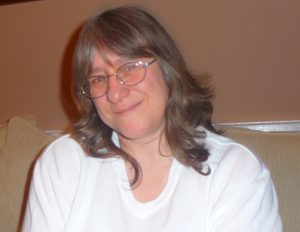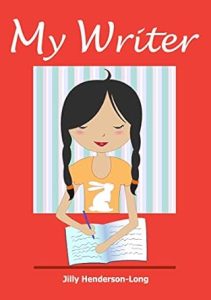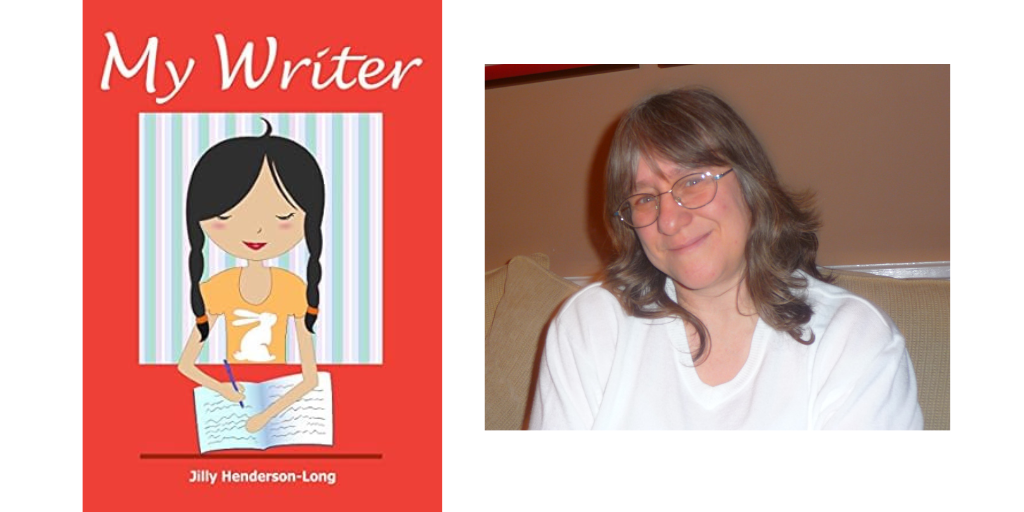Writer Of The Month: Jilly Henderson-Long
Introduced by Gareth Southwell
 February’s Writer Of The Month feature focuses on Jilly Henderson-Long. Now based in Westcliff-on-Sea in Essex, Jilly’s passion for writing began in early childhood and has continued unabated ever since. She’s not only a published poet and children’s book author, but has always been keen to share her love of writing, sharing her knowledge through courses and workshops for both adults and children, and in 2012 set up Addiscombe Young Writers, a group aimed at nurturing interest in writing with six to 11 year olds.
February’s Writer Of The Month feature focuses on Jilly Henderson-Long. Now based in Westcliff-on-Sea in Essex, Jilly’s passion for writing began in early childhood and has continued unabated ever since. She’s not only a published poet and children’s book author, but has always been keen to share her love of writing, sharing her knowledge through courses and workshops for both adults and children, and in 2012 set up Addiscombe Young Writers, a group aimed at nurturing interest in writing with six to 11 year olds.
In the first of Jilly’s pieces, she explains the inspiration for setting up Addiscombe Young Writers. Pointing out that many famous writers had an early start, she asks that, if the urge to tell stories can begin at such an early age, shouldn’t we do more to foster it in our children?
Creative Writing And Children – A Brief History
Research shows that child writers are nothing new. Literature is peppered with the names of child writers. Although some were in their mid-teens, there are many much younger children who also saw their work published. Possibly the best known of these is Daisy Ashford (1881-1972). She was just nine years old when her now classic book The Young Visiters (sic) was written. Diary Of A Young Girl by Anne Frank (1929 – 1945) was written – under truly traumatic circumstances – between the ages of 13 and 15 and evidence shows that she had intended to publish the book at some stage, since she experimented by giving all those locked behind the storage cupboard in the ‘Secret Annex’ fictitious names she could possibly use in the future.
A quick look at various search engines reveals the names of dozens of other child writers. Jayne Fisher began her series of Garden Gang stories when she was just nine and is still cited as publisher Ladybird’s youngest ever author. She wrote 14 books about a group of fruit and veg characters which were published between the 70s and 80s and sold in their millions. Even younger is Dorothy Straight (b 1958), whose How The World Began was written when she was just four and published two years later. Likewise, Christopher Beale (b 2000) saw his book This And Last Season’s Excursions published when he was just six. Alex Greven (also b 2000) was nine when his first self-help book How To Talk To Girls was published – and so the list goes on – Mattie J T Stepanak (1990-2004), Nancy Yi Fan (b 1993), and Pamela Brown (1924 – 1989), to name but a few.
One of the earliest recorded successful child writers was Alexander Pope (1688 – 1744), whose poem Ode To Solitude first appeared when he was just 12. Also prolific were the Brontes, whose later works became all-time classics. They were very young when they created The Glass Town Federation (later split into the districts of Angria and Gondol), when inspired by some of Bramwell Bronte’s toy soldiers. Not only did they create this imaginary world, but they furnished it with tiny books filled with minuscule writing.
All this begs the question. In today’s push-button technological world where, it seems, babies are born knowing how to use mobile phones, how can we – as a nation of readers – encourage young writers of the future? Given that children generally spend around 12 years in school, possibly followed by three or more years at college and any number of years at University, where, amongst all those activities and pastimes, can they be encouraged to try Creative Writing? That was where Addiscombe Young Writers came in.
*****
The next extract is taken from Jilly’s 2014 children’s book, My Writer, published in partnership with Publish Nation. It’s about a young girl who dreams of being a writer, but is overshadowed by her brother, a famous actor. The book seeks to encourage young people to write, and reinforces the idea that writing can be for its own sake, whether or not it brings fame or success, and that some sort of creative outlet should be a vital part of everyone’s life as it helps us to find out who we are.
Excerpt from My Writer
When I told Nana about the competition at school, she begged me to go in for it. I said I want to be a writer like Dickie Doyle, not a poet like Wordsworth, but she says lots of people are both – like Roald Dahl – so why not at least give it a go. She could be right. I have written a few stories, but I have never tried poetry so, to help me, she has lent me some of her published stuff to go through.
*****
The next piece is an excerpt from Jilly’s first children’s book, Yucketypoo: The Monster That Grew And Grew, published in 2007 by Lollipop Publishing. It is a story about a monster that grows out of a mass of discarded rubbish, and sprang from Jilly’s great love of nature and a desire to share that with children. We’re all worried about climate change and the damage that humans are doing to the planet, and the book highlights small practical ways in which children can help protect our environment. This takes the form of a series of poems. Here’s one:
Excerpt from Yucketypoo – The Monster That Grew And Grew
IT BEGINS (The Sweet Wrapper)
Careless Annie in the street
dropped the wrapper from her sweet,
a gust of wind then swept the ground,
blew that wrapper round and round,
blew that wrapper left and right,
half the day and through the night,
blew that wrapper in the air
until a ‘something’ saw it there.
if only Careless Annie knew
how the monster grew and grew
*****
Our final pieces look at the other end of life, and deal with Jilly’s involvement with caring for the elderly. She is now herself retired, but the following two poems are drawn from her time working with sufferers of dementia, inside and outside of the care home system. Both poems appeared on the All Poetry website in 2021.
A Different Freedom
I see the flowers, birds and sky
but they won’t let me out,
I don’t know why.
I ask and then
I ask some more,
“Please let me out and open this door.”
But no, they shake their heads in gloom
and take me back to my little room
where I sit by the window
and gaze at the sky.
they won’t let me out,
I don’t know why.
Don’t Look Away Because I Smell
I imagine what goes on in her head.
‘Why? Why do they turn away?’
But she’s so grubby!
Wasn’t she wearing those clothes last week?
Doesn’t she realise
she reeks of dirt and urine
and unkemptness?
I feel for her.
She must wonder why
people recoil
when they see her.
Even me, I’m ashamed to say.
If she was offered help,
would she be insulted?
or would she be relieved
that someone, somewhere
understands that
all she needs is
some TLC,
a hot bath,
a good meal
and maybe – just maybe
another chance at life.
*****
As Jilly’s life and work emphasises, writing can be a key part of a fulfilled life, providing creative fulfilment and personal enjoyment for people of all ages. It is also something that can bring people together, helping us to develop a sense of community as well as our own individual purpose. Writing is therefore fundamentally about sharing; it is a two-way bridge, allowing others into our own lives as we reach out into theirs.
Connect with Jilly on X (formerly Twitter): @Jilly52144833
*****
Issue 19 of Write On! is out now or pick up a copy in local libraries and other venues. In the meantime, you can find previous editions on our magazines page here.
 Each edition of our Write On! Audio podcast features an exclusive interview. Find us on all major podcast platforms, including Apple and Google Podcasts and Spotify. Type Pen to Print into your browser and look for our logo or find us on Anchor FM.
Each edition of our Write On! Audio podcast features an exclusive interview. Find us on all major podcast platforms, including Apple and Google Podcasts and Spotify. Type Pen to Print into your browser and look for our logo or find us on Anchor FM.
*****
If you or someone you know has been affected by issues covered in our pages, please see the relevant link below for information, advice and support: https://pentoprint.org/about/advice-support/
Writing is fundamentally about sharing; it is a two-way bridge, allowing others into our own lives as we reach out into theirs.




